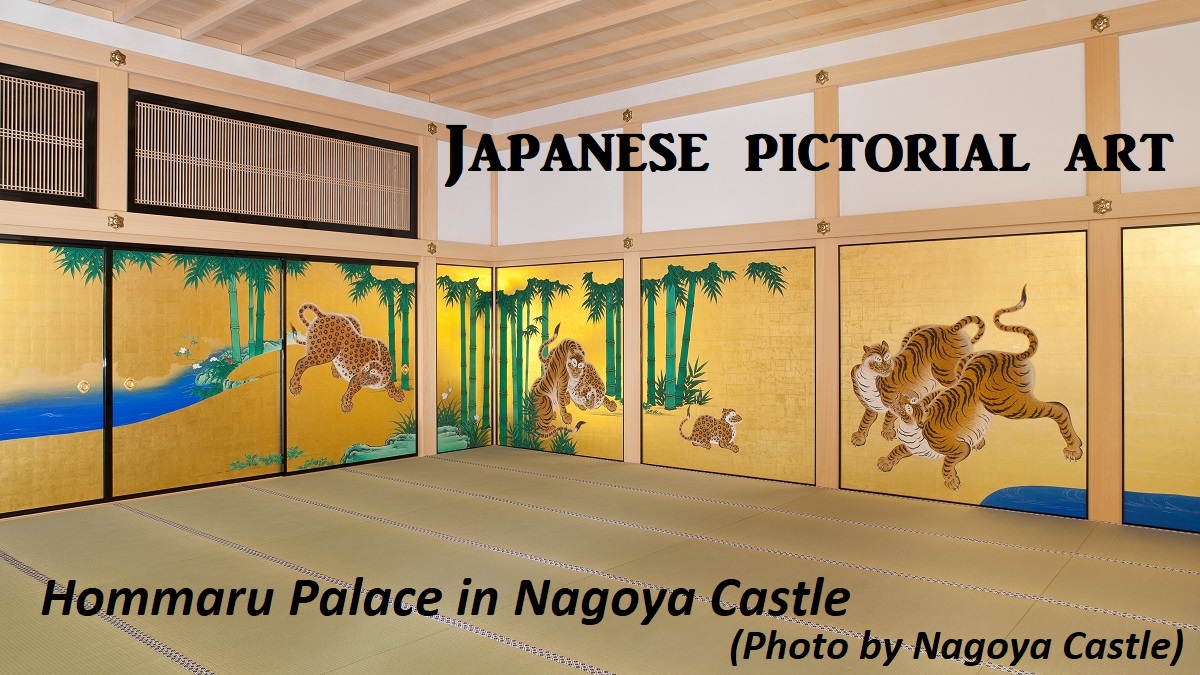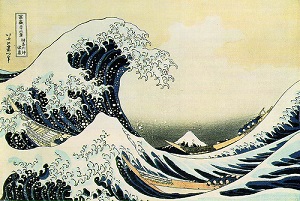Japanese pictorial art
There are many various categories in Japanese pictorial art.
So in this page, I introduce some characteristic categories.
The start of Japanese pictorial art was Buddhism introduced from China in the 6th century.
Then the style of Japanese picture had been formed gradually by around the 10th century.
Traditional Japanese painting
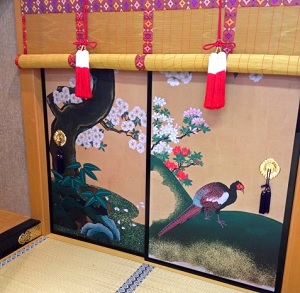
Painting on fusuma
Traditonal Japanese paintings have been drawn since very old times.
They are painted with not oil paints but powdered mineral pigments.
So, we can find few gradation or overlap of color on any picture.
Ernest Francisco Fenollosa (1853-1908), who was an art historian in America and was invited to Japan to teach philosophy in the late 19th century, showed the following points of Japanese paintings.
- It doesn't pursue realism like photo.
- The picture image has no shadings.
- The picture image has line contour.
- Used colors aren't strong.
- The expression is very simple.
The main subjects of the paintings are person, nature and Gods.
And the pictures were painted on not only papers but also byobu (folding screen) or fusuma (sliding screen of Japanese room).
Suibokuga (Sumie)
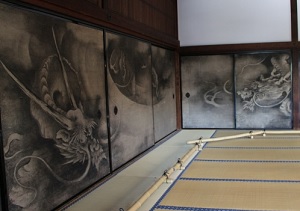
Suibokuga
Suibokuga is one of Japanese paintings, and it is the picture painted with only black ink.
It is also called Sumie.
It was introduced from China around the 12th century.
We use a brush and black ink for calligraphy.
When Suibokuga is created, these tools are used.
Of course, the color is only black.
But it is painted with contrasting density and gradation of ink.
The main subject of Suibokuga is mainly landscape.
Ukiyoe
Ukiyoe is woodblock print made between the 17th and the 19th centuries.
"Ukiyo" means "the life of citizens", and "e" means "painting".
So mainly, a beautiful lady, a Kabuki actor, a Sumo wrestler or a tourist spot was painted on a sheet.
These were like commercial photo portraits or tour guidebook for the general public.
Additionally, they were used as the illustration in books or on callendars.
There were also the Ukiyoe like comics or pornographic painting.
Many copies are made, so a part of them were taken to Europe.
As a result, it is said that Ukiyoe had a major impact on French Impressionism (For example, Vincent Willem van Gogh, Claude Monet).
I think that Ukiyoe is one of most popular Japanese art for world people.
Famous painters are the following.
- Kitagawa Utamaro (1753-1806) : He painted many beautiful ladies.
- Katsushika Hokusai (1760-1849) : He painted 36 sceans of Mt.Fuji.
- Toshusai Sharaku (1763?-1820?) : He painted Kabuki actors.
- Utagawa Hiroshige (1797-1858) : He painted many landscape.
Emakimono
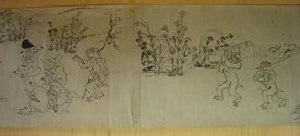
Choju-Jinbutsu-Giga, an Emakimono painted in the 12-13 century
Emakimono has a unique form of painting.
It is translated as "picture scroll" in English.
Many papers are connected horizontally, so the picture plane has 30 to 50 centimeters wide and 10 to 20 meters long.
And it is rolled compactly.
Commonly continuous story or visual scene was painted on it.
So we can find some Emakimonos on which pictures and words are put alternately.
This form is for one viewer like reading a book.
The viewer see it in sequence from end to end with rolling.
Most Emakimonos were mainly produced between the 11th and 16th centuries.

